The article will tell you in detail how to grow an exotic plant - litchi, as well as how to care for it.
Contents
- What is a litchi fruit, what does it look like where its homeland: description
- Is it possible to grow lychees from a stone on a windowsill like a house flower?
- How to choose a pot, land for litchi planting?
- Litchi bones: how to germinate and plant?
- Lychee fruit - how the plant grows in a pot, at home: photo
- Video: "Lychees - growing at home"
What is a litchi fruit, what does it look like where its homeland: description
The fruit called "litchi" is very unusual andis considered exotic. Someone calls him fruit, others say that lychee is a berry. Whatever it was, lychee not only has a pleasant and rich taste, but also a huge benefit. The fruit of the fruit is that it has a unique biochemical composition - a mass of vitamins and trace elements.
Immediately it is worth noting that lychee - the fetus is not large, its diameter is approximately
3-4 cm .The weight of one berry does not exceed 15-20 grams of .The peculiarity of the exotic fruit is its dense and slightly prickly peel, which covers the juicy and jelly-like flesh.Flesh color - milky. Inside the pulp, a large seed of dark brown color hides. The taste qualities of lychee are very pleasant. The ripe fruit has a sweet shade with a slight sourness. If you try to find a comparison with other fruits, the taste of the pulp is somewhat like cherry and pineapple. The aroma of the pulp is very fresh and sweet.
Lychee - fetus common in Asia: China, Japan, India, Thailand .In these countries, lychees are rarely called, as the "eye of a dragon" for its visual similarity with an eye: a white apple and a black apple. For its useful and nutritious qualities, lychee has gained popularity in folk medicine. Many even consider him an aphrodisiac for the rich content of zinc and therefore lychee - an obligatory treat on the tables of the newlyweds.
Frequent use of lychee can favorably affect all body systems, boosting the tone of the body, improving the performance of blood vessels, "killing" cholesterol and lowering sugar. A huge merit of litchi is the ability to regulate the water-salt balance in the body, to remove puffiness and to promote weight loss.
IMPORTANT: Not only the flesh of the fetus is used for food. From the skin of lychee, curative decoctions are prepared. Bone, for example, in Vietnam and China, fried with spices in oil, a raw litchi bone is considered poisonous.
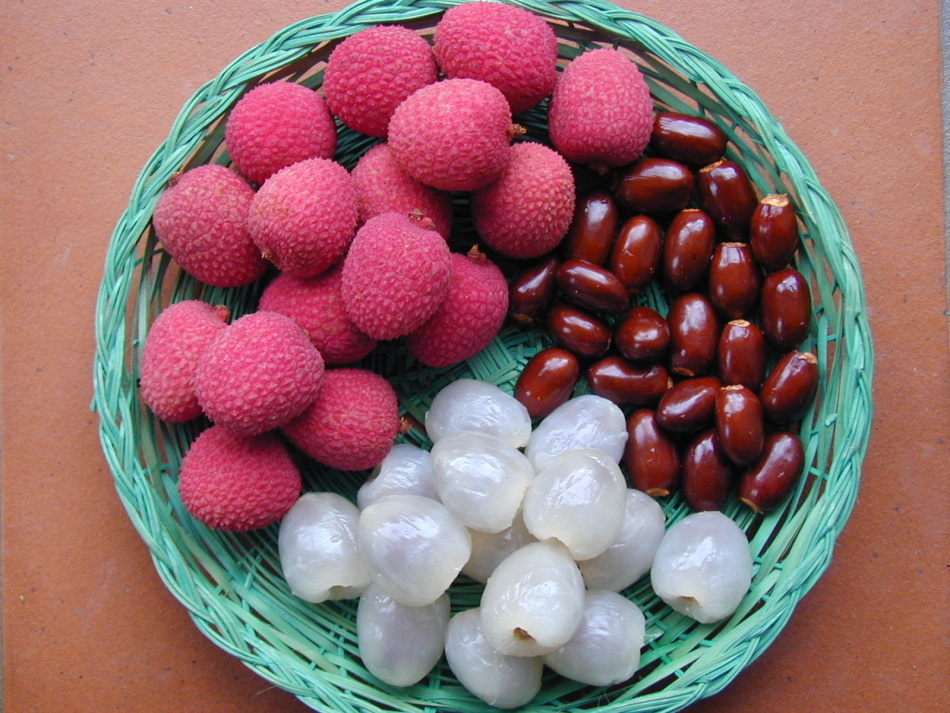 Lychee: whole fruit, flesh and bone
Lychee: whole fruit, flesh and bone  Lychee: fruit in a cut
Lychee: fruit in a cut 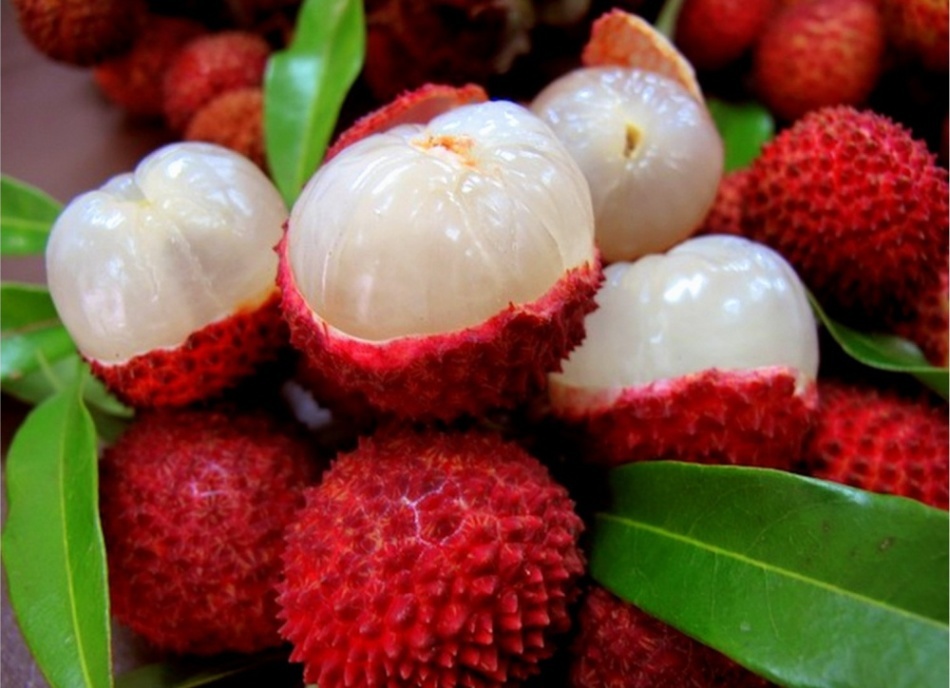 Lychee lychee without skin. To clean lychee is best with a sharp and thin knife
Lychee lychee without skin. To clean lychee is best with a sharp and thin knife 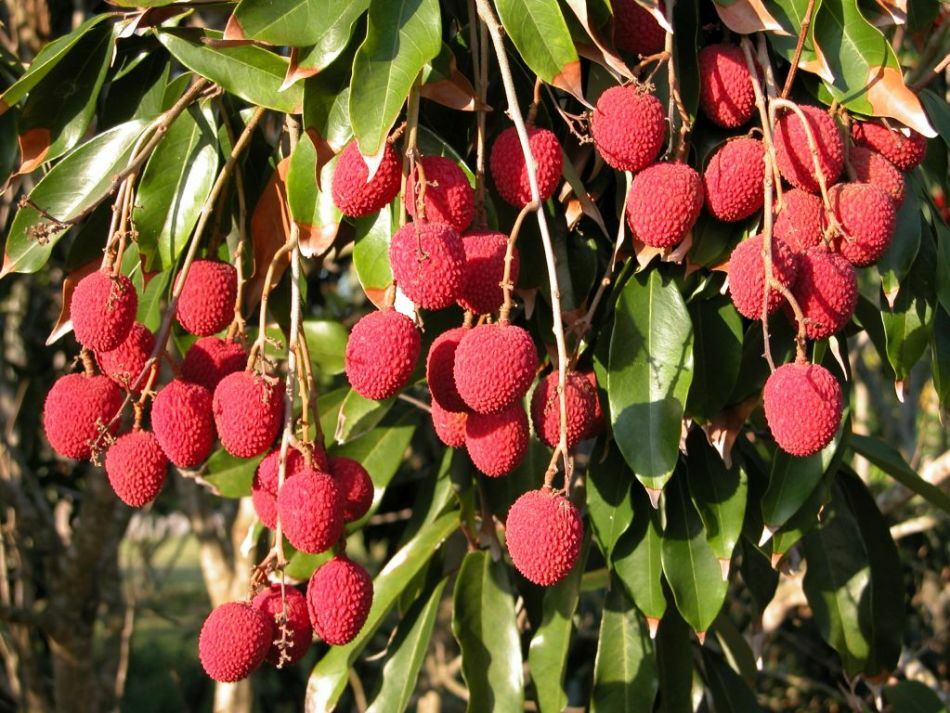 Litchi fruits on a tree, branches
Litchi fruits on a tree, branches 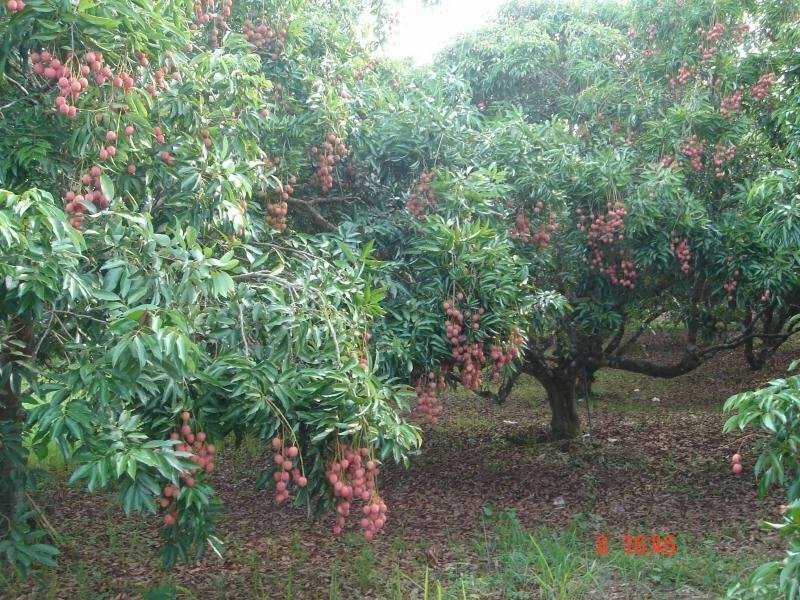 Tree with ripe lychee fruit
Tree with ripe lychee fruit Is it possible to grow litchi from a stone on a window sill like a house flower?
Lychee is an exotic, but very beautiful plant that has not only bright red fruits, but also graceful glossy leaves: elongated, pointed, long. The plant is more accustomed to grow in warm Asian countries, but if all conditions are met, it is also possible to grow a small litchi on its window sill.
It is important to know that you can grow lychees only from the bone that was in the fresh berries( dried and canned fruits do not fit).Of course, home lychee can not often please you with abundant fruits, but, nevertheless, under close attention and your attentive care, you can find a beautiful plant.
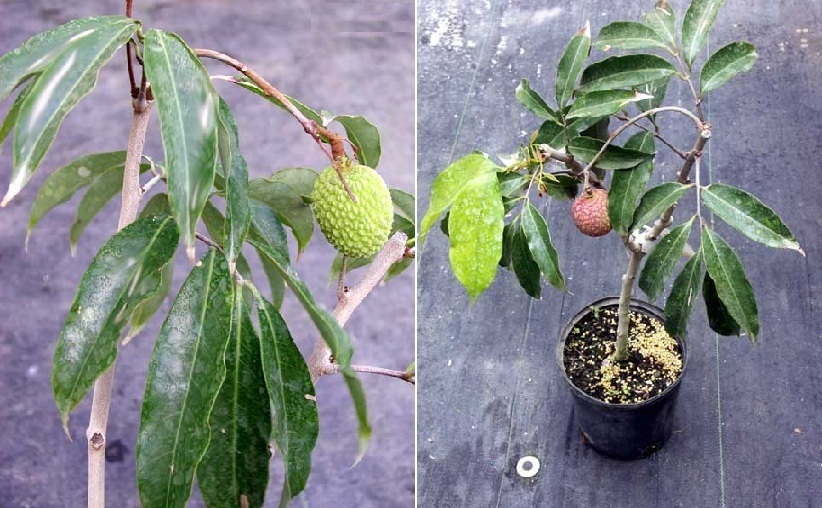 Litchi plant with a fetus at home
Litchi plant with a fetus at home How to choose a pot, a land for planting litchi?
After you eat the lychee pulp itself, try to remove the bone as carefully as possible so as not to spoil and damage it. In order to grow something you need a small pot, not more than 8-9 cm in diameter.
Before planting, make sure that there are enough holes in the bottom of the pot that the water in it does not stagnate and prevent the plant from rotting completely. It is possible to put a layer of drainage on the bottom of the pot( special pebbles that retain moisture but pass water).Before planting, prepare the "right" soil for the litchi - a mixture of land and peat.
IMPORTANT: Litchi pot best to choose one that is made of natural material, for example, from clay or ceramics. In a plastic pot, the plant may suffocate.
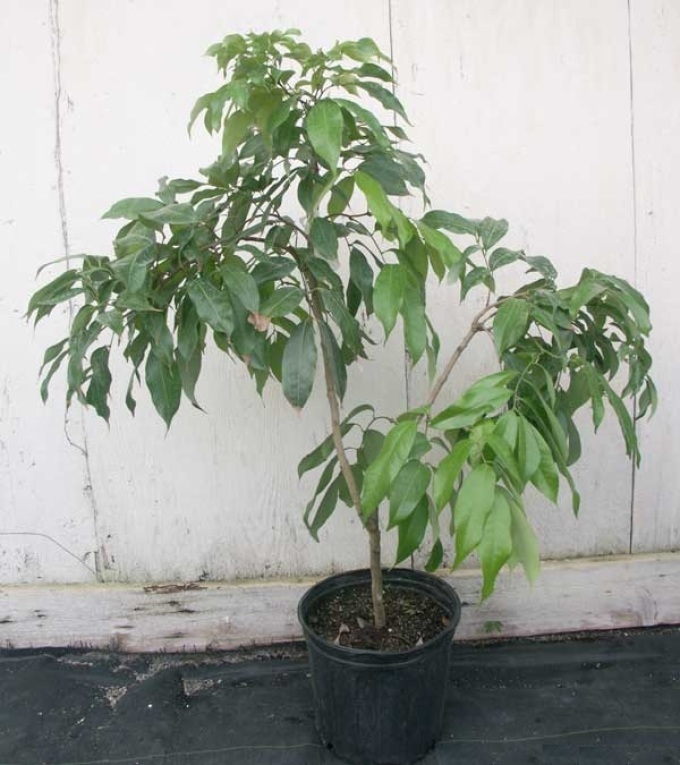 Lychee: home "adult" plant
Lychee: home "adult" plant Litchi bones: how to germinate and plant?
It is important to know that when planting it is necessary to put in the ground not one but about 4-5 litchi bones. This is done quite simply: in a soft soil, a bone is inserted vertically with a finger, not more than 2-3 centimeters deep. There should be no more than 1-1.5 cm of soil above. The probability that the sprout will rise is great.
After that, moisten the soil and tighten the pot with polyethylene( food film is best suited).This will allow the sprout to be in constant moisture and it will not be able to dry out. At first, the pot should be placed in a warm, but not the most sunny place( next to the battery, for example).
The time it takes for a sprout to rise is 1.5-2 weeks. All this time it is important to check the pot, adding moisture, if required. The soil must not be dry for a day. Each time, tighten the pot with a film. After the sprout appears on the surface, the film can be removed and put the plant on the east window sill( the sun should be small).
Lychee fruit - how the plant grows in a pot, at home: photo
After the germ grows up, you should carefully look after your litchi. First of all, the temperature is important. A young plant needs a temperature regime of 23 to 25 degrees. The first few weeks after the appearance of sprouts on the surface, lychee grows quite quickly and actively, their height can reach 20 centimeters.
However, after the violent growth in the "first months of life", the plant "stops" and stops increasing in size. The reason is the strengthening of the root system. The roots are so strong that if you have grown a plant in a plastic cup, you can see how it will burst.
Lychee needs light about 12-15 hours a day, however it does not like direct sunlight. In the cool season, provide lychee additional lighting. Make sure that the lychee does not dry out, since the plant does not tolerate dry soil at all. Litchi should be watered as the top layer of the soil dries.
Litchi should not be watered with cold water, it is best to use a stand-by and room temperature. As often as possible, increase the humidity in the room and spray the plant from the spray gun. To feed organic fertilizers should only an adult plant, not "younger" 3-4 months.
